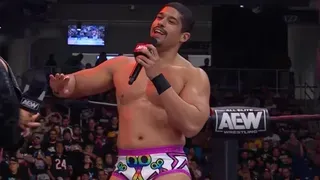November 23, 2013
Beaujolais Vineyards Aim to be More Than 'Nouveau'
Matthew Wexler READ TIME: 3 MIN.
The wine world's best-known party is beginning - the ritual uncorking of Beaujolais Nouveau every November. That's both a curse and a blessing for the famed French region and its lesser-known yet finer wines.
Beaujolais Nouveau is easy to drink, but everything a fine wine is not: young, poor in tannins and not suited to storage. It's partially because new wines could never hope to stir the imagination the way that the great wines of Bordeaux or Champagne do that the makers of Beaujolais Nouveau resorted to what has become a hugely successful marketing campaign.
It's an operation "to bring value to a wine that is not part of the mythology of French wines," said Serge Michels, vice president of Proteines, an agribusiness consultancy.
And so, as they do every year, bars and wine shops the world over uncorked the first bottles of the 2013 Beaujolais Nouveau at midnight on Wednesday. What started as the very first chance to taste a given year's wine in Paris years ago has led to parties as far away as Japan and the United States.
"The party has started," said Bernard Rogue-Bouge as the new wine flowed from a barrel in his Au Petit Chavignol Restaurant in Paris. "Cheers! To the Beaujolais!"
Speed is part of its mystique. Beaujolais Nouveau is typically flown to its customers, while other wines travel by ship.
Wineries that make Beaujolais Nouveau export a larger proportion of their wine than any other producer in France, sending about 47 percent of their harvest abroad every year. The biggest market is Japan, which drank nearly 9 million bottles of it last year and which also typically has the privilege of uncorking their bottles before anyone else. The U.S. downed more than 2 million bottles in 2012.
The campaign has been so successful that growers of finer wines in Beaujolais, just north of the eastern French city of Lyon, wondering if they've created a monster that is obscuring everything else they do. Beaujolais' nouveau wines make up about a third of the wine produced in the region each year.
"Beaujolais represents only 0.3 percent of the land under cultivation for wine ... and yet it's one of the most well-known wines in the entire world," said Jean Bourjade of the professional association of Beaujolais growers, Inter Beaujolais. "(That's) thanks to Beaujolais Nouveau. No one regrets that."
But "it's the tree that hides the forest," he lamented.
Beaujolais Nouveau is the best known of a series of "vins de primeur" - wines that have a short fermentation period and are generally fruity and easy to drink but have a short shelf life. By French government decree, they cannot be sold before the third Thursday in November.
But the rise of wines from the Southern Hemisphere has taken away a bit of that novelty, since harvests there are earlier in the year and they can claim the title of first-to-market in any given year. Plus the traditional flurry around the wines has led to some excesses, Bourjade admits.
"Everyone wanted it, so certainly at some point - it was 20 or 30 years ago - we made too much. And it's true at that time, there were problems of quality," he said.
But Bourjade said winegrowers have since reorganized and recommitted to quality, and they now produce less than half the nouveau wine they did at the peak in the 1990s.
Still, the wine has at best a mediocre reputation in France, where it is notorious for delivering vicious hangovers and considered the stuff of student parties, not fancy soirees.
Bourjade said winegrowers are trying to turn that reputation around - and are trying to work their marketing magic on the region's higher-end vineyards that make non-nouveau, cru wines.
Sheri Morano, a master of wine who works with wine experts Chai Consulting, suggested the task may be accomplished if they can educate drinkers that they don't need to drink fine Beaujolais right away.
"The cru Beaujolais can last - if they last in your cellar," she said. "They're so good and yummy. I have trouble keeping them around!"
Matthew Wexler is EDGE's Senior Editor, Features & Branded Content. More of his writing can be found at www.wexlerwrites.com. Follow him on Twitter and Instagram at @wexlerwrites.







